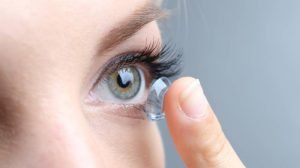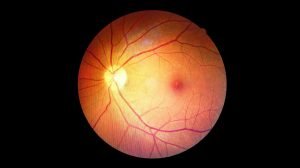Are you experiencing the discomfort of a swollen, sometimes painful, and bothersome lump on your eyelid? This could very well be a chalazion – a common eye condition that affects many individuals. While generally not dangerous, a chalazion can significantly impact your daily life and confidence.
Often confused with a stye, it’s absolutely crucial to have a clear understanding of what a chalazion is, its underlying causes, key symptoms, and the correct approach to management. Mastering this essential knowledge will empower you to proactively prevent chalazion and confidently apply safe, effective home treatment for chalazion strategies.
This comprehensive article serves as your ultimate guide, leading you through every vital aspect of chalazion: from clearly distinguishing it from a stye, identifying its potential hidden causes, to providing simple yet remarkably effective chalazion prevention tips, and detailing proven home remedies for chalazion. We will also clearly outline when it’s necessary to consult an eye doctor to ensure your precious eyes are optimally protected.
What is a Chalazion? Distinguishing It from a Stye
Among the various eyelid conditions, chalazion and styes are frequently confused due to their similar initial presentation. However, a clear distinction between these two is essential for choosing the most appropriate and effective treatment.
A chalazion (pronounced kuh-LAY-zee-on) is fundamentally a small lump, typically painless or only mildly tender at its onset, that appears on either the upper or lower eyelid. It forms when one of the Meibomian glands – tiny oil-secreting glands located along the eyelid margin – becomes blocked. When the oil produced by these glands accumulates, it leads to a sterile (non-infectious) inflammatory reaction, ultimately forming this characteristic lump.
Key characteristics to help you identify a chalazion:
- Location: A chalazion usually develops deeper within the eyelid tissue, positioned further away from the immediate lash line compared to a stye.
- Sensation: Initially, it might present with slight redness and mild tenderness. However, within a few days, it typically evolves into a firm, palpable lump that is generally painless to the touch.
- Size: Its size can gradually increase over time, sometimes becoming quite noticeable.
- Duration: A chalazion can persist for several weeks to even months if it’s left untreated.
Distinguishing a chalazion from a stye (Hordeolum):
|
Characteristic |
Chalazion |
Stye (Hordeolum) |
|
Cause |
Blocked Meibomian gland (non-infectious inflammation). |
Acute bacterial infection (often Staphylococcus aureus). |
|
Location |
Deeper inside the eyelid. |
At the eyelid margin, typically at the base of an eyelash. |
|
Pain |
Mildly painful initially, then often painless. |
Very painful, swollen, and distinctly throbbing. |
|
Onset |
Develops slowly, gradually. |
Sudden, acute onset. |
|
Pus |
Usually no pus. |
May develop a visible pus head. |
Accurate identification of your eyelid condition is critical, as it guides you towards more effective home treatment methods and helps you determine when professional medical consultation is necessary.
Causes of Chalazion
A chalazion originates when a Meibomian gland becomes blocked, preventing the oil from draining and causing it to accumulate internally. Several primary factors contribute to this blockage:
- Meibomian Gland Dysfunction (MGD): This is a leading cause of chalazion. When Meibomian glands don’t function efficiently, they may produce oil that is too thick or too sparse, making their ducts prone to obstruction.
- Blepharitis: This chronic inflammation of the eyelid margins, often caused by bacterial overgrowth, significantly increases the risk of Meibomian gland blockage and, consequently, chalazion formation.
- Improper Eye Hygiene: The accumulation of dirt, excess oil, and dead skin cells on the eyelids can directly clog these delicate glands.
- Eye Makeup Use: Cosmetic products like eyeliner, mascara, and eyeshadow can inadvertently block the gland openings, especially if not thoroughly removed each day.
- Touching Eyes with Unclean Hands: Introducing bacteria to the eyes through dirty hands can lead to inflammation and subsequent gland blockage.
- Hormonal Changes: Fluctuations in hormones can impact the composition and viscosity of the oil produced by the Meibomian glands.
- Certain Skin Conditions: Conditions such as rosacea can affect the function of oil glands throughout the face, including those in the eyelids.
Risk factors that increase the likelihood of recurrent chalazion: A history of previous chalazia or styes, chronic blepharitis, rosacea, frequent eye rubbing, and generally poor eye hygiene practices. Understanding these causes of chalazion and associated risk factors empowers you to take proactive preventive measures.
>> Read more: A Guide to Identifying and Managing Common Eye Diseases
Effective Chalazion Prevention
Prevention is always superior to cure, especially for chalazion – a condition prone to recurrence if not properly managed. Implementing effective chalazion prevention strategies not only helps you avoid discomfort but also ensures the long-term health and clarity of your eyes.
Proper Eye Hygiene
Hygiene stands as the foremost crucial factor:
- Wash hands frequently and thoroughly: Always wash your hands meticulously with soap before touching your eyes or handling contact lenses.
- Daily eyelid cleansing: Gently wipe along your eyelid margins, focusing on the lash line, with a clean, warm cloth or a specialized eyelid cleanser. Perform this 1-2 times daily.
- Thorough eye makeup removal every evening: Absolutely ensure all eye makeup is completely removed before going to bed to prevent oil gland blockage.
- Change pillowcases regularly: Pillowcases can accumulate dirt, oils, and bacteria that can transfer to your eyes.
Lifestyle Adjustments
- Avoid rubbing your eyes: This prevents introducing bacteria and causing irritation or trauma.
- Cautious contact lens use: Adhere strictly to hygiene rules, replacement schedules, and recommended cleaning solutions.
- Limit the use of expired eye makeup products.
- Consider Omega-3 supplementation: This may help improve the quality of oil produced by your Meibomian glands.
- Manage underlying health conditions: Especially if you have conditions like diabetes or rosacea, as they can indirectly affect eyelid health.
Home Treatment for Chalazion
If a chalazion has already appeared, there’s no need for excessive worry. Most small to medium-sized chalazia can be significantly improved, often resolved, using simple, safe, and effective home treatments for chalazion. The primary goal of these methods is to soften the blocked oil and encourage its natural drainage.
Warm Compress
The warm compress is considered the most vital and effective home treatment for chalazion. The warmth helps to liquefy the clogged oil, reduce localized inflammation, and promote natural drainage from the gland.
How to perform a warm compress:
- Preparation: You’ll need a clean, soft cloth or a sterile gauze pad, and warm water (ideally around 40-45°C – comfortably warm, not scalding hot).
- Application: Dip the cloth in warm water, wring out excess water so it’s damp but not dripping, and apply it directly onto the affected eyelid where the chalazion is located.
- Duration & Frequency: Hold the compress in place for 10-15 minutes per session. Repeat this process 3-4 times daily, or even more frequently if comfortable.
- Note: Always use a fresh, clean cloth for each application to prevent potential infection. Ensure the water temperature is safe for your delicate eyelid skin.
Eyelid Massage
Following a warm compress, gentle eyelid massage can help physically push the now-liquefied oil out of the gland.
How to perform eyelid massage:
- Hand Hygiene: Wash your hands thoroughly with soap before touching your eyes.
- Massage Technique: Using a clean fingertip, gently massage the area of the chalazion on the eyelid. For the upper eyelid, stroke downwards towards the lash line. For the lower eyelid, stroke upwards towards the lash line.
- Duration: Massage for about 1-2 minutes after each warm compress session.
- Note: Apply gentle pressure only; avoid harsh rubbing or excessive force, as this can worsen irritation.
Other important considerations for home treatment:
- DO NOT attempt to squeeze or pop a chalazion: This is critically important. Doing so can lead to severe infection, permanent damage to the gland, or even scarring.
- Limit eye makeup use: Refrain from applying eye makeup while treating a chalazion to prevent further blockage or contamination.
- Use prescribed ointments/drops (only under medical direction): Only use any medicated eye drops or ointments if specifically prescribed by a doctor; never self-medicate.
Consistency is key when performing these home remedies for chalazion. If the chalazion does not reduce in size or shows signs of worsening, it’s essential to seek professional medical advice.
When to See a Doctor? Warning Signs for Chalazion Requiring Medical Intervention
While most chalazia can improve with dedicated home treatment, there are specific circumstances where professional medical intervention from an ophthalmologist is necessary. Recognizing these signs of chalazion requiring medical attention is crucial to prevent potential complications.
You should seek immediate medical attention from an eye doctor if:
- The chalazion does not improve after 1-2 weeks of diligent home treatment.
- You experience severe or continuously worsening pain.
- There is widespread redness and swelling extending across the entire eyelid, potentially accompanied by fever or swollen lymph nodes.
- It significantly affects your vision (causing blurriness, double vision, or distortion).
- The chalazion discharges pus or any other abnormal fluid.
- The chalazion recurs multiple times in the exact same location.
- You suspect an unusual lump (this is very rare for chalazia, but a doctor may recommend a biopsy in certain cases to rule out other conditions).
Your doctor can provide effective and safe treatments, which may include prescribing medication, corticosteroid injections, or performing a minor surgical incision and drainage procedure.
Eye Care After Chalazion Resolution
Even after a chalazion has completely resolved and your eye returns to normal, maintaining proper and consistent eye care is extremely important. This is the key to reducing recurrence and ensuring the long-term health of your eyes. Do not become complacent, as a chalazion can easily return if not managed correctly.
Make the following recommendations a regular part of your routine to protect your valuable eyes:
- Continue daily eyelid hygiene: Use warm water or a specialized solution to clean your eyelid margins daily.
- Ensure thorough eye makeup removal every evening: Never go to sleep with eye makeup on.
- Regularly change your pillowcases: To minimize exposure to accumulated dirt and bacteria.
- Inspect and replace eye cosmetics periodically.
- Limit eye rubbing: If your eyes feel dry or itchy, use artificial tears instead.
- Maintain a healthy diet and lifestyle: This includes supplementing with Omega-3s, staying well-hydrated, and getting sufficient sleep.
- Schedule regular eye exams: To detect any potential underlying issues early.
Conclusion
A chalazion is a common condition that is entirely manageable when you are equipped with the correct knowledge. Understanding what a chalazion is, its causes, and its symptoms empowers you to deal with it proactively.
Be diligent in applying effective chalazion prevention through proper hygiene and a healthy lifestyle. When a chalazion appears, utilize home treatment methods for chalazion like warm compresses and gentle massage. Most importantly, do not overlook the signs of chalazion requiring medical intervention to receive timely support from an eye care professional.
By applying this knowledge, you will not only alleviate the discomfort of a chalazion but also build a strong foundation for healthy, radiant eyes in the long term. Cherish and care for your eyes well!










